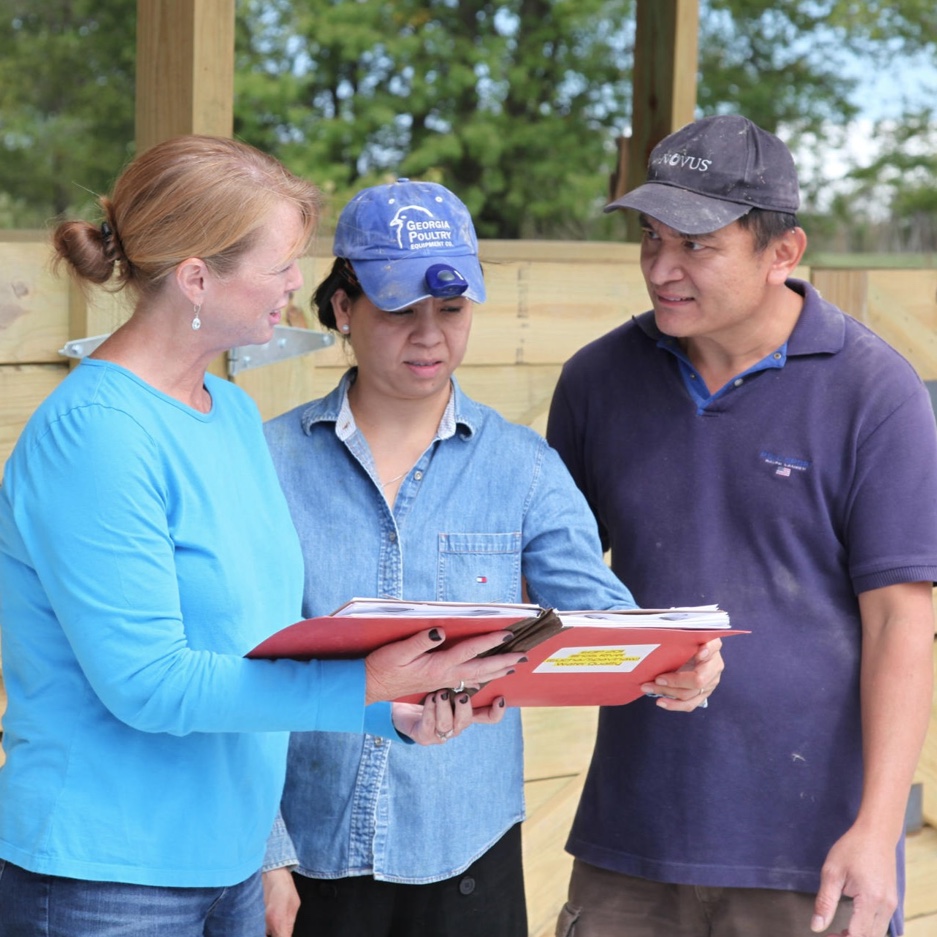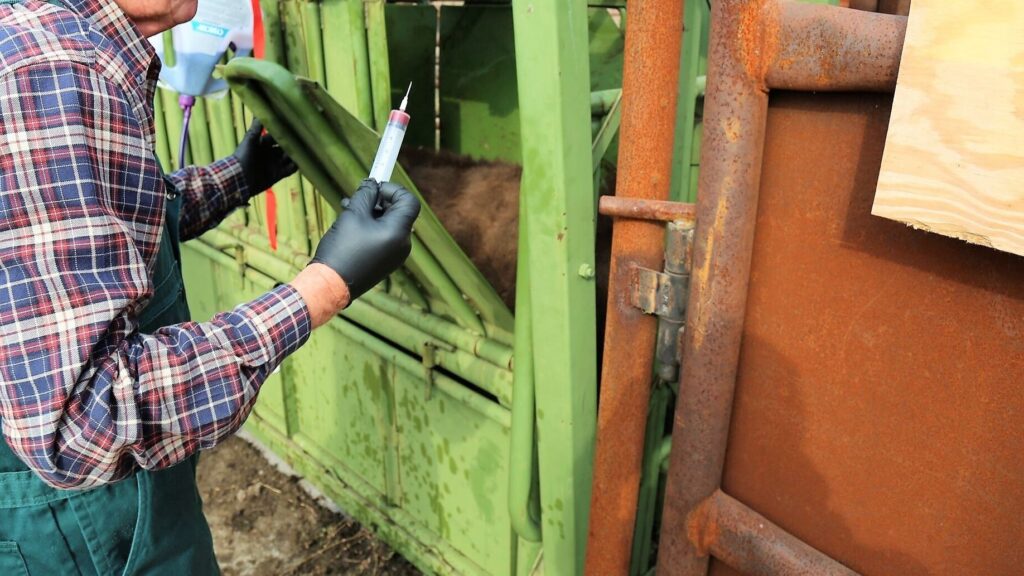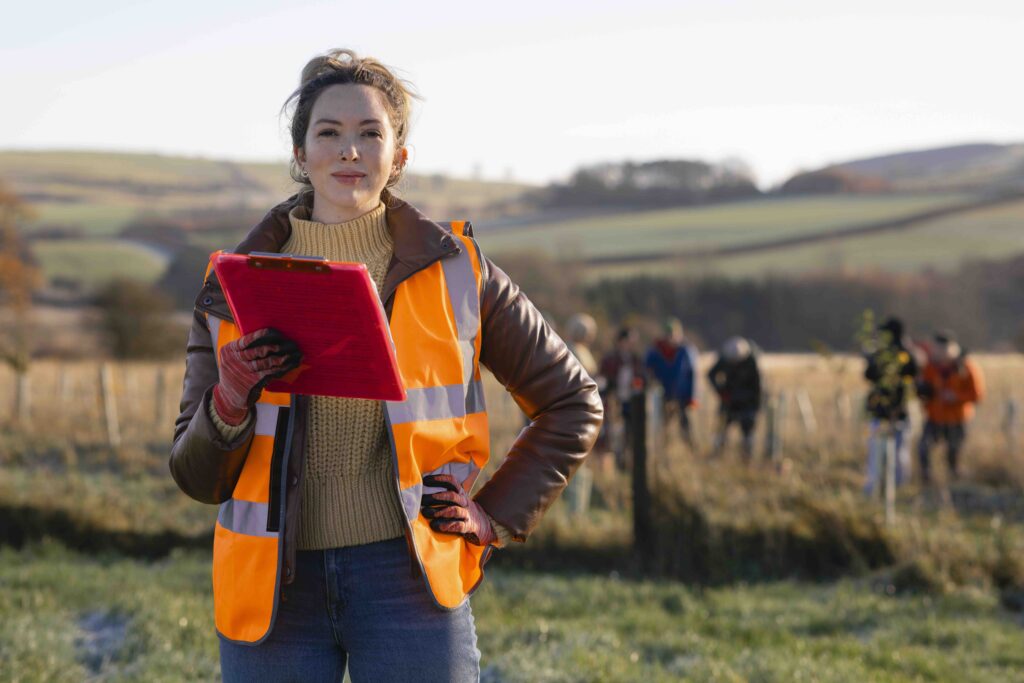
IN THIS ISSUE
- It Happened to One of Us
- Announcing the $100 Peavy Mart Gift Card Winners!
- May 13-19, 2024 is Kids FarmSafe Week!
- AgKnow Pilot Program is Offering up to Four FREE Counselling Sessions
- Safe Handling of Veterinary Drugs & Medicated Feeds
- Are the People in Charge of Safety on Your Farm Trained & Competent?
It Happened To One of Us
2019 Incident Summary
(Incident source: Alberta Government. 2021, March. Investigation Report: Worker fatally injured in farm tractor rollover May 20, 2019. Retrieved April 8, 2024 from https://open.alberta.ca/dataset/e6b454a1-1f13-4d51-9c2c-388e5163af68/resource/951b2857-9dd0-4fb1-b270-441196a50397/download/lbr-fatality-report-no-f-ohs-171334.pdf)
An experienced farm worker was operating a newer tractor with an enclosed cab towing a land roller in a field that had a very steep drop off into a gully on one edge of it. Prior to starting work, it was reported that the farmhand and supervisor had discussed the work to be done, including the hazards, such as the steep drop off on the side of the field and how the land roller had the potential to push the tractor due to its size and weight.
Tire tracks at the scene indicated that the right side of the roller tipped over the edge of the field, pulling the tractor over the edge, where it overturned multiple times and ejecting the farm worker from the cab. The farm worker was found by another farm hand, who discovered they had been ejected from the tractor cab and sustained fatal injuries.

Sadly, this incident highlights how experience and recognizing the hazards are important, but these things alone cannot keep us or the people working on our farm safe. Understanding and applying the hierarchy of controls is essential as it allows us to build extra layers of safety into what we do. Nothing is perfect, so the more safety measures we can take, the better; for example:
- While it is not always possible to eliminate or substitute a hazard, serious thought should be given to that possibility before moving on to engineering controls. Getting outside opinions and bringing others into the discussion may help identify things you may have not previously considered.
- Engineering controls, such as placing physical barriers to protect people from accidentally entering or going too close to hazardous areas, add an extra layer of protection.
- In addition to training and competency checks, another type of administrative control could include not farming land immediately next to high-risk areas, such as having a “buffer zone” near steep areas and ensuring everyone working on your farm is aware of this.
- Finally, a seatbelt is a type of protective equipment worn by someone operating a vehicle or other type of equipment, such as a tractor. PPE is the least effective type of hazard control, and while it cannot guarantee someone’s safety, it can help keep a person in the cab in the event of a rollover or collision.
To learn more about hazard identification and control on farms, you can take AgSafe Alberta’s free, online FarmSafe Plan Learning Program or download a copy of the AgSafe Alberta FarmSafe Plan Manual from our website.

Announcing the $100 Peavy Mart Gift Card Winners!
Congratulations to the winners of our $100 Peavy Mart gift card prize draws for course completions during the month of March, in honour of Canadian Agricultural Safety Week!
Shane Strydhorst
Todd Eastman
Willem Muller
Thank you to everyone who completed courses and took steps to the safety culture on their farm or ranch.
May 13-19, 2024 is Kids FarmSafe Week!
The 2024 Kids FarmSafe Week campaign aims to provide farm safety tips and information for kids, parents, guardians and anyone else who interacts with children and youth on the farm. The goal of the campaign is to raise awareness about farm safety for kids to #KeepKidsFarmSafe.
The campaign will feature daily themes to highlight specific areas of health and safety for kids on the farm. The themes are youth mental health; machinery safety (ATV, UTV, tractors); youth health on the farm; preventing falls; safety around animals; and drowning prevention.
Resources and other Kids FarmSafe Week content will be free to download from kidsfarmsafe.ca.
Other child & youth farm safety resources can be found at:
Candian Agricultural Safety Association (CASA)
Heartland Training & Support Hub (formerly the Farm Safety Centre)
Cultivate Safety
AgKnow Pilot Program is Offering up to Four FREE Counselling Sessions

AgKnow, the Alberta Farm Mental Health Network, is running a pilot program that provides up four free counselling sessions to farmers, their families, farm employees, veterinarians and registered veterinarian technicians.
To learn more or request a session with one of their practitioners, visit agknow.ca or click HERE.
Safe Handling of Veterinary Drugs & Medicated Feeds
Did you know that exposure to some vaccines can cause asthma or respiratory difficulties, such as anaphylaxis?
Vaccines, anti-parasitics, medicated feeds and other products present hazards in livestock care environments. When handling these products, don’t underestimate the potential dangers to the people or other animals present on your farm. Anyone working directly with or near the product should become familiar with it, as well as its label and drug insert.
Questions You Should Be Able to Answer
- What are the hazards and risks of the product?
- How do I use the product safely? Are there any special hazard control measures or precautions that I need to take, such as working in a well-ventilated area or wearing personal protective equipment?
- What do the signs of an exposure look like? What type of treatment would be required?
- How should the product be stored if there is any left over and, if necessary, how does it need to be disposed of properly?
When to Read a Veterinary Drug or Medicated Feed Label
- Before buying the drug/medicated feed
- Before using the drug/medicated feed
- Before storing the drug/medicated feed
- Before disposing of the drug/medicated feed
Are the People in Charge of Safety on Your Farm Trained & Competent?
You can’t give someone a health and safety title (health & safety
coordinator, safety officer, safety advisor, etc.) and the responsibilities that go with it without ensuring they have knowledge and skills they will need to fulfill their role.
Training is a process where people are provided with the knowledge and skills that they will need to perform their job well. Training should be designed based on the necessary competencies of the job. In the case of someone who would be in charge of safety on the farm, a sound understanding of health and safety fundamentals, the farm’s health and safety program, farm specific hazards & hazard controls, and familiarity with Alberta Occupational Health and Safety (OHS) legislation would all be needed.
To be considered competent in a role, someone must be adequately qualified, suitably trained and with enough experience to perform the work well. Once competency is achieved, efforts must be made to maintain it, especially in the field of health and safety, as things like best practices, industry standards and OHS legislation change.
Knowing all of this, take a moment to identify the individual(s) in charge of the health and safety program on your farm. Consider what qualifications, training and experience they have and compare it to the qualifications, training and experience you need them to possess. You will have to make efforts to support them in becoming competent and this will include providing training that they may be lacking. Below are some resources that will support you in helping your farm team members with health and safety roles in working towards becoming competent.
All of the courses listed below can be accessed through the AgSafe Alberta website or by clicking HERE.
AgSafe Alberta FarmSafe Plan Learning Program
This is a free, self-paced learning program that introduces Alberta producers to health & safety fundamentals and how they can apply this information to their specific operations. This program was designed with both family farms and farms with employees in mind and will guide the learner in developing a farm-specific health and safety program.
AgSafe Alberta WHMIS 2015, Pesticide, Veterinary Drug and Medicated Feed Awareness Course
This course introduces the learner to the Workplace Hazardous Materials Information System (WHMIS) and has been developed to familiarize farm workers, employers and family members with WHMIS and other types of hazardous products (i.e., pesticides & veterinary drugs), and help farm team members learn where to find more information on the products they work with; and, gain an understanding of how to use these products safely.
Effective Health & Safety Representative Awareness Training
This course is designed for farms and ranches in Alberta with five to 19 regularly employed workers and who are required by Alberta OHS legislation to have a health and safety representative in place. It is recommended for health and safety representatives and farm owners or managers who want to better understand the role of a health and safety representative as well as their own role in supporting the health and safety representative.
Effective Health & Safety Committee Awareness Training
This course is designed for farms and ranches in Alberta with 20 or more regularly employed workers and who are required by Alberta OHS legislation to have a health and safety committee in place. It is recommended for health and safety committee members and farm owners or managers who want to better understand the role of a health and safety committee as well as their own role in supporting the health and safety committee.

DO YOU HAVE HEALTH & SAFETY QUESTIONS?
If you have farm-specific health and safety questions or require support relating to health and safety on your farm, please contact AgSafe Alberta at info@agsafeab.ca. You may be eligible for onsite farm visits and up to 10 hours of advisor support at no cost!
CONTACT US
For general inquiries: info@agasafeab.ca /403-219-
For our hotline for incidence assistance: 1-833-9AGSAFE




